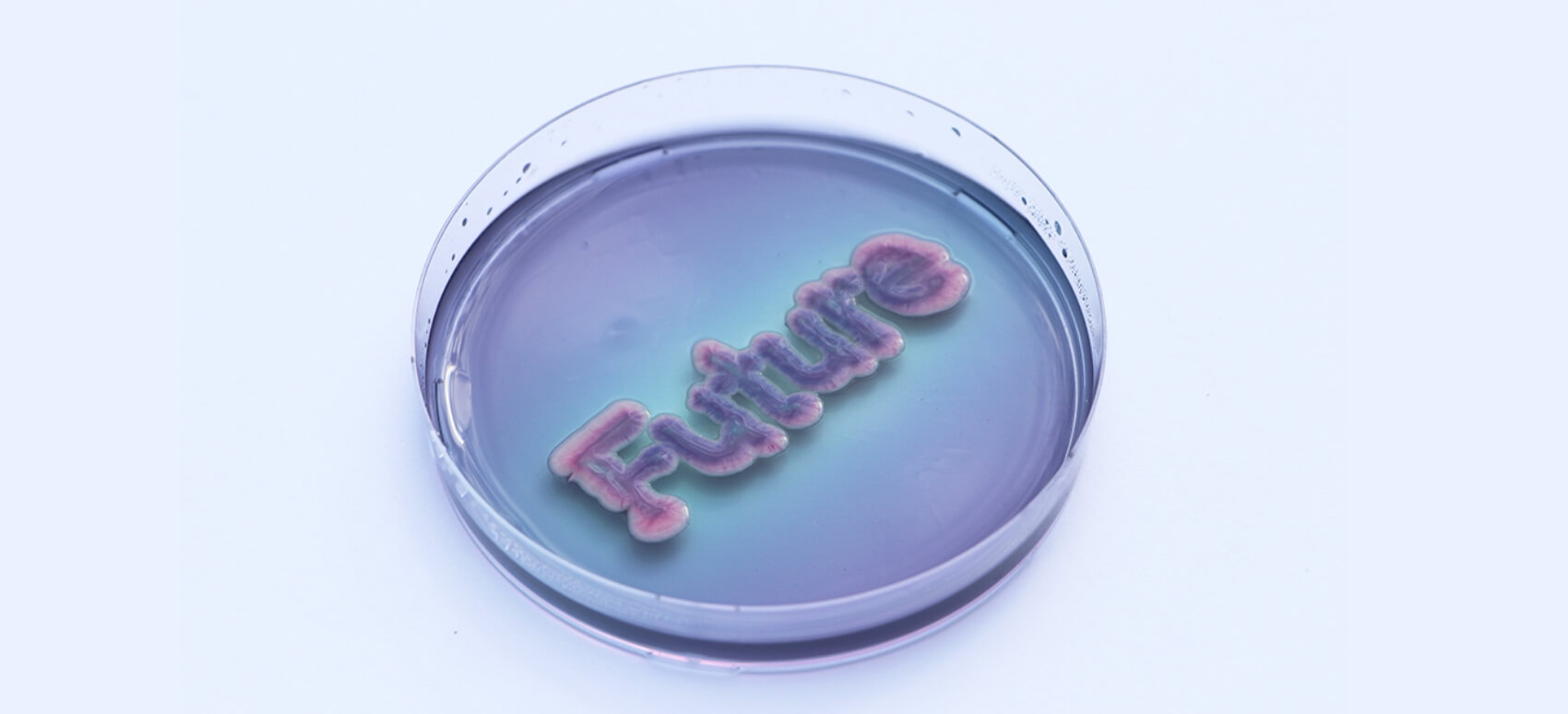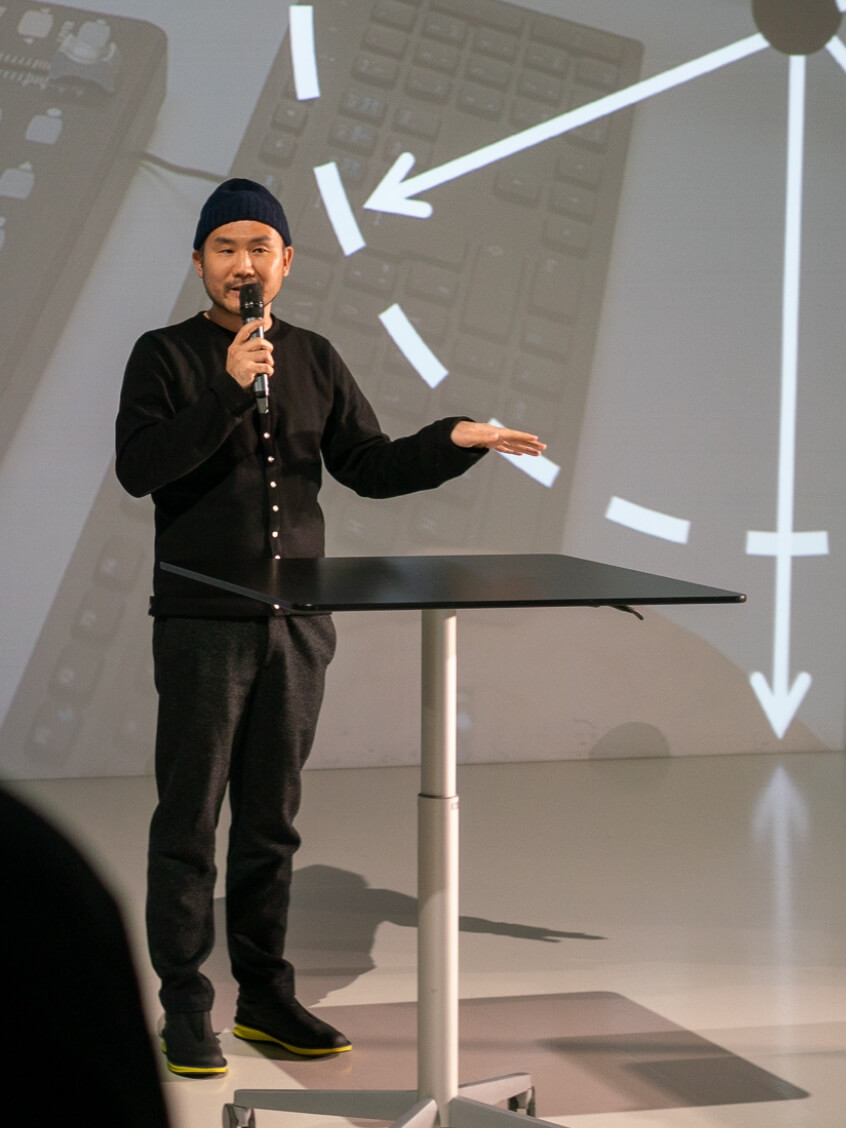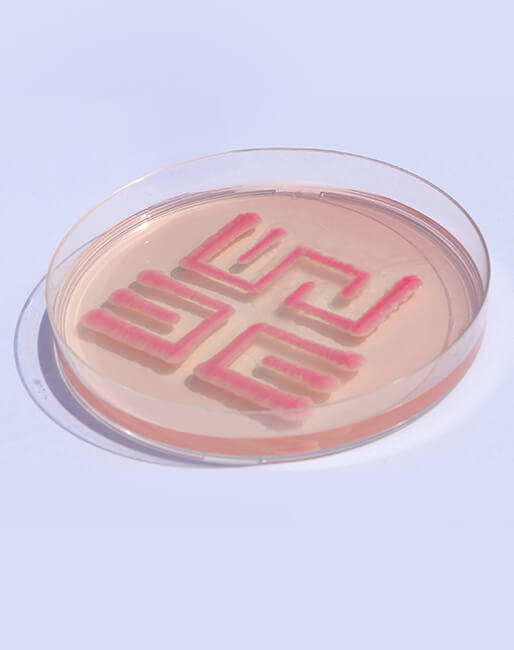Where is My Soul? Finding the Soul with the Visionaries of the Future

When facing inspiring works of art, whether writing or painting, we feel connected to the soul of the artists. But where does the soul reside? Wacom and Ars Electronica have been collaborating in exploring answers to this fundamental question. In the second year of their joint research, they are working on the theme of “living ink”. The collaboration with microorganisms, which cannot be predicted or controlled, explores new questions for the future.

Thoughts about the Future
To think about the future is somewhat scary yet exiting. Futurology, i.e. the scientific study of the future, was first established in the 1960s and has developed rapidly since then. In futurology, research is conducted from a technological point of view to forecast what may happen in the future. It is a complex subject involving multiple disciplines such as mathematics, economics, political science, engineering and others. In a sense, it also deals with the question of “how to get a grip on excessively sophisticated science and technology”. Futurology may even encompass realms of philosophy and ethics. Take ASTRO BOY as an example. The superhero “son of science” is a figure in a famous comic series produced by Osamu Tezuka. This masterpiece of manga is not just a fantasy born out of daydreaming about the future but based on Tezuka’s solid scientific knowledge. Thus, it depicts both the bright and dark sides of the future. The master of manga is also a futurologist.
Nowadays, opinion leaders calling themselves futurologists or futurists actively contribute to public discussions while private corporations are searching for a vision of the future through the mindset of futurology. In the days of VUCA (Volatility, Uncertainty, Complexity, Ambiguity), the future is often talked about in a pessimistic way. Yet thoughts about the future are not necessarily bounded by resignation or limitation, but are meant to create hope. Why? Because thinking helps disentangle complex factors that affect the future and thus strengthens our conviction that “we can shape the future by our own hand”.

Future Made Available at Your Fingertips
Japan’s legendary manga “Draemon” by Fujiko F. Fujio which celebrated its 50th anniversary in 2020 has entertained generations from children to adults with exciting futuristic ideas as if it were “windows to the future“. In that sense, Ars Electronica is something like a modern version of Draemon. Based in Linz, the capital of Upper Austria with a population of approximately 200,000, Ars Electronica is a unique cultural institution with a clear mission. It originated in a movement to build a future-oriented community by interlinking art, technology and society. Mr. Hideaki Ogawa, Co-Director of Ars Electronica Futurelab, describes Ars Electronica as “an institution creating a cultural infrastructure” and “a public company designed to give citizens a key to the future”. In an analogy to the water department working for the mission to “supply fresh water at the turn of the tap”; the mission of Ars Electronica is to “make the future available at your fingertips”.
(Photo: Pilo)
Ars Electronica has many facets: the Ars Electronica Festival, a media art festival that began in 1979; the Ars Electronica Futurelab, established in 1996 to conduct research on cutting-edge technologies and provide cultural education; the Ars Electronica Center, a media arts center and museum open to the public; and the Prix Ars Electronica, an international competition held since 1987. The Ars Electronica is the sum of all these functions, and they are all organically connected. The fact that this is a public institution run by the city is fascinating.

Exploring the question “Where is my Soul?”
In the second year of their venture, the project team led by Mr. Hideaki Ogawa and Ms. Yoko Shimizu now works on “Bio Ink” based on principles of biotechnology, one of Ars Electronica’s fundamental technologies. Using agar medium as a canvas, microorganisms are used to draw messages and drawings. As the microorganisms multiply, unexpected patterns appear over time. In other words, it is a "living ink”.
(Photo: Ars Electronica - Mario Schmidhumer)
In this joint experiment, Bio Ink expresses the messages and artworks drawn with a Wacom digital pen. The question here is: What is a signal, and what is noise? In the digitization process of words and drawings, only signals are extracted while noises are removed. However the signals intended by the artist are not always faithfully expressed. The soul may even be in the noise that we remove. In addition, when we create with organisms that grow freely in Bio Ink, it is even more difficult to distinguish between signal and noise. From a human perspective, the movements of living organisms may appear as noise, but the organisms are merely working as part of nature. In fact, from the perspective of the universe, a philosophical question arises - Are humans the noise in nature?
Indeed, workshops on this theme at the Ars Electronica Festival held in September this year were very positively received by the participants. The workshops provided unique opportunities to “experience” new expressions created by Bio Ink using the latest digital tools, encouraging the participants to think about life and Earth, and raising important questions to the public. At Connected Ink 2021, there will be active discussions on the new questions found in this research.

The Role of Art in a Rapidly Changing Society
“As we consider what the ink of the future will be, I think the question "Where is my soul?" will be a theme that we will continue to work on also in the future. Using ink as a keyword, we would like to continue to brush up the question itself while presenting it to society through various prototypes.”
(Photo: Ars Electronica - Robert Bauernhansl)
It is essential to identify definite issues in exploring the world of the future. All “futurologists” - whether private companies or public institutions - should share the same starting point.” At the start of their 3-year project, Nobu Ide, CEO of Wacom, put this collaboration into a few words “I don’t know what will happen to this Project after three years but one thing is sure - we will keep asking questions”. On the other hand, what does Connected Ink mean to Ars Electronica? Mr. Ogawa describes Connected Ink as “a platform for collision rather than collaboration”.
"The Connected Ink event brings together a diverse group of creators with different characteristics and backgrounds. I feel that there is a future that can be seen from the creative collisions that occur there and the aftermath. It's not only a place to talk about what we have in common with each other, but also a place of exploration for those who are exploring new creativity. Ars Electronica is involved in a variety of research and educational activities on a regular basis, but the opportunity to participate in a community in the form of Art x Industry is invaluable. By discussing the importance of art with leading business people, we can reaffirm the meaning of our daily activities and the role that art plays.”
In many areas of our lives, the COVID-19 pandemic has removed the veil of secrecy from the stress and distortions that our society has taken pains to conceal. Artists play the role of “future citizens” and present a set of values that are not yet formed or are already there but not yet visible to most observers. Growing expectations for arts may be a natural product of our time. In response to the increasing bias and the pressure that may tear societies apart, arts are expected to play an ever more significant role.
editor / writer_ Chikara Kawakami

